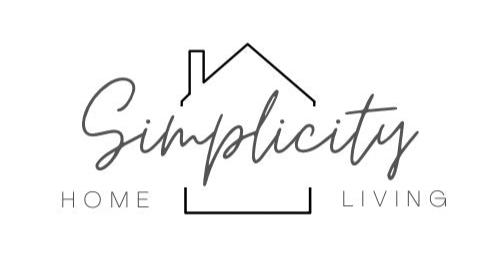Your living room is the heart of your home, a space where you relax, entertain guests, and spend quality time with family. It's no wonder that a well-designed living room can significantly enhance your overall living experience.
However, transforming your living room doesn't necessarily require a complete overhaul or a hefty budget.
With some simple design hacks, you can breathe new life into your space and make it both stylish and functional.
In this blog post, we'll explore a variety of living room design ideas, focusing on easy and affordable changes that can make a big impact.
Assess Your Space
Before diving into any design changes, it's essential to evaluate your current living room setup. Take a step back and assess what works and what doesn't.

Identify the elements you love and the areas that need improvement. This initial evaluation will help you create a clear vision for your living room transformation.
Consider factors such as the room's layout, lighting, and existing furniture.
Are there any pieces that feel out of place or redundant? Is there enough natural light, or do you rely heavily on artificial lighting? By understanding these aspects, you can better plan your design changes and ensure they align with your needs and preferences.
"Design is not just what it looks like and feels like. Design is how it works." – Steve Jobs
Declutter and Organize
A clutter-free living room is the foundation of a well-designed space.
Clutter not only makes a room feel cramped but also detracts from its overall aesthetics. Start by decluttering your living room, removing items that no longer serve a purpose or contribute to the design.
Begin with small steps:
- Clear out magazines, unused decor, and old electronics.
- Invest in storage solutions such as baskets, shelves, and cabinets to keep essentials organized and out of sight.
A clean and organized living room instantly feels more spacious and inviting.
To maintain this clutter-free environment, develop a routine for regular tidying up. Simple habits like putting away items immediately after use can prevent clutter from accumulating.
"Have nothing in your house that you do not know to be useful, or believe to be beautiful." – William Morris
Furniture Arrangement
The way you arrange your furniture can make a significant difference in your living room's overall look and feel.
Start by creating a focal point, such as a fireplace, a large window, or a statement piece of furniture. Arrange your seating around this focal point to create a cohesive and inviting layout.
Use Raymour & Flanigan's 3D Room Planner to see your ideas come to life!
Consider the flow of movement within the room. Ensure there is enough space for people to move around comfortably without obstacles.
If your living room is small, opt for furniture that is proportionate to the space. Multifunctional pieces, like a sofa with hidden storage or a coffee table that doubles as a desk, can help maximize functionality without compromising on style.
Experiment with different furniture arrangements until you find one that enhances the room's layout and suits your lifestyle.
"Furniture should always be comfortable. And always have a piece of art that you made somewhere in the home." – Tamara Taylor
Lighting Enhancements
Lighting plays a crucial role in living room design, affecting both the ambiance and functionality of the space.
To create a well-lit and inviting living room, incorporate a mix of ambient, task, and accent lighting.
- Ambient lighting: Also known as general lighting, is the overall illumination that provides a comfortable level of brightness without glare and allows people to see and move around safely. It is the primary source of light in a room and sets the tone for the space.

- Task lighting: A type of lighting specifically designed to help you perform particular tasks that require more focused light. This type of lighting is essential for activities such as reading, writing, cooking, sewing, and working on crafts or hobbies.

- Accent lighting: A type of lighting used to highlight and draw attention to specific objects, architectural features, or areas within a space. It is primarily decorative and helps create visual interest and a focal point by adding depth and dimension to a room.

Consider incorporating dimmer switches to control the brightness levels and create different moods. Natural light is also essential, so make the most of any windows by keeping them unobstructed and using light, airy curtains.
"Lighting is an essential way to change the mood of a room, especially through different lamps and fittings." – Sasha Bikoff
Color Schemes and Paint
The color palette of your living room can dramatically influence its atmosphere. Choose colors that reflect your style and create the desired mood, you don't need to be a trend chaser.
Light, neutral colors can make a small room feel more spacious and open, while darker hues add coziness and warmth.
Consider an accent wall to introduce a pop of color without overwhelming the space. An accent wall can be painted in a bold color or adorned with wallpaper or textured finishes. This simple change can create a focal point and add visual interest.
When selecting paint, while we are after cost savers, paint is not worth skimping on; opt for high-quality, washable finishes that are easy to maintain. Don't be afraid to experiment with color, but keep in mind the overall harmony of the space.
"Color is the backbone to home design and can evoke emotions and set the tone of a space." – Martyn Lawrence Bullard
Incorporate Textures and Patterns

Adding textures and patterns to your living room design can create depth and visual interest. Mix and match different materials, such as wood, metal, glass, and fabric, to achieve a balanced and cohesive look.
Consider incorporating textured elements through rugs, cushions, throws, and curtains. Patterns can be introduced through wallpaper, upholstery, or decorative accessories.
Be mindful of not overloading the space with too many patterns (perhaps such as the photo above); instead, choose a few complementary ones to create a harmonious design.
Textures and patterns can also be used to highlight certain areas of the room, such as a cozy reading nook or a stylish seating area.
"The details are not the details. They make the design." – Charles Eames
Decorative Accessories
Decorative accessories are the finishing touches that bring your living room design together. Choose accessories that reflect your personality and style, such as artwork, plants, and personal items.
Artwork can serve as a focal point and add a sense of sophistication to the room. Choose pieces that complement your color scheme and style.
Plants not only enhance the aesthetics but also improve air quality and create a calming atmosphere. Select low-maintenance varieties if you're not particularly green-thumbed.
Personal items, such as family photos, souvenirs, and collectibles, add a unique touch and make the space feel truly yours. Arrange these accessories thoughtfully, ensuring they don't clutter the room but rather enhance its design.
"Your home should tell the story of who you are, and be a collection of what you love." – Nate Berkus
Functional and Stylish Storage Solutions
Storage is often a challenge in living room design, especially in smaller spaces. However, with some creative thinking, you can find storage solutions that are both functional and stylish.
Consider built-in shelves or cabinets to make the most of vertical space. Floating shelves are a great way to display decorative items without taking up floor space. Ottomans and benches with hidden storage are perfect for stowing away blankets, magazines, and other items.

Use storage baskets and boxes to keep smaller items organized. Choose designs that match your decor to ensure they blend seamlessly into the room.
"Good design is all about making other designers feel like idiots because that idea wasn't theirs." – Frank Chimero
Final Touches and Personalization
The final touches in your living room design should reflect your personal style and preferences. Add elements that make the space comfortable and inviting, such as cozy blankets, soft pillows, and a plush rug.
Personalize the room with items that have sentimental value or tell a story. This could be a vintage piece of furniture, a handmade item, or a family heirloom. These personal touches not only add character to the room but also make it feel more like home.
Remember that the ultimate goal is to create a space that is both beautiful and functional, where you can relax and enjoy time with family and friends.
"An interior is the natural projection of the soul." – Coco Chanel
Enjoy Your Living Room Design
Transforming your living room doesn't have to be an overwhelming or expensive task. By implementing these simple design hacks, you can create a stylish, functional, and inviting space that reflects your personality and meets your needs.
From decluttering and organizing to experimenting with colors, textures, and lighting, each change contributes to a cohesive and aesthetically pleasing living room design.
So, why wait? Start your living room transformation today with these easy and affordable home design ideas. With a bit of creativity and effort, you'll be amazed at how quickly you can breathe new life into your living room, making it a space you'll love spending time in.
Happy decorating!
Thanks for reading and check out some more of our blog posts:










